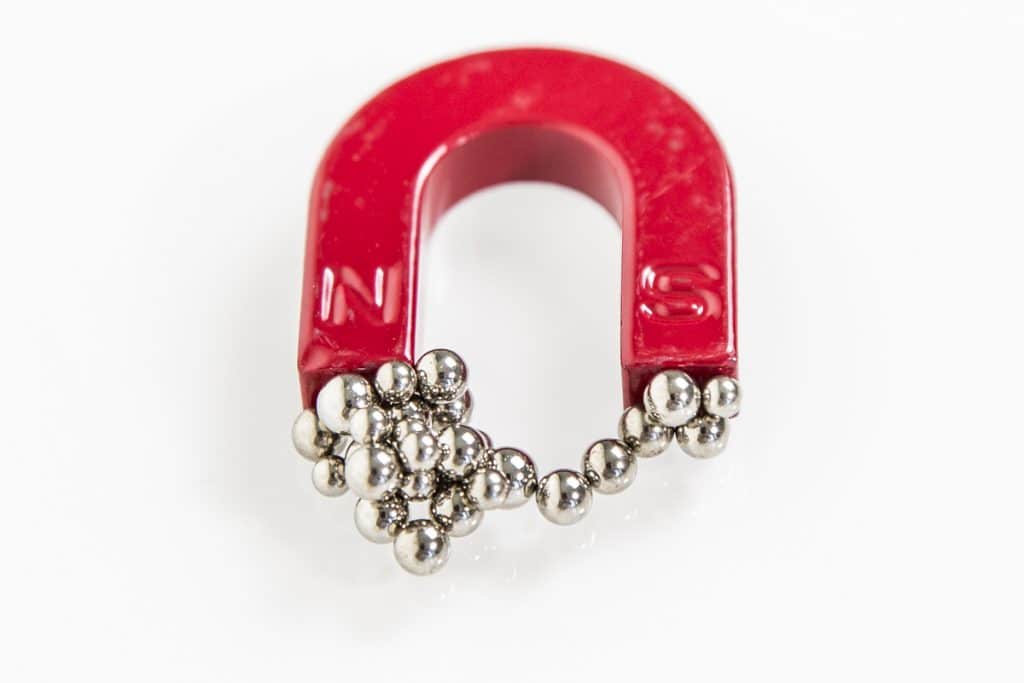A Compass Magnetically Shows The Way
By Paul Fears | 15 June 2017
Interaction Between A Compass and Earth’s Magnetic Field
When a kid is given a compass for the first time, they almost become mesmerised by the way the needle spins around every time they move. No matter which way they go, the compass needle will always point in the same direction.

The simple compass was invented over 2000 years ago in China, initially for divination. The military of the Song Dynasty in China was the first to use it for navigational purposes in around 1040-44 and the first record of a compass being used for maritime navigation was between 1111 and 1117.
In Europe, the English scholar, teacher, theologian and abbot of Cirencester Abbey Alexander Neckham, was the first to mention the use of a magnetic compass in texts written between 1187 and 1202.
How the Compass Works
The Magnetic Compass is a very simple but equally amazing navigational tool. It consists of a small, lightweight magnet balanced on a nearly friction-less pivot point. The magnet actually forms the ‘needle’ of the compass. The end of the needle is usually marked with a ‘N’ for North or coloured red and is orientated in the Earth’s magnetic field.
How Does the Earth Have a Magnetic Field?
Although nobody apart from characters in the 1864 Jules Verne novel ‘Journey to the Centre of the Earth‘ have actually made it to the Earth’s core, the study of earthquakes, plate tectonics and volcanoes has enabled physicists to model the likely structure.
In the centre of the Earth is thought to be a solid iron core, which is around 60% of the size of the moon. The iron is held in a solid state by the immense pressures.
Circulating around the iron core is a 2000km thick layer of molten iron, nickel, and small quantities of other metals. This layer is only molten as the pressure is lower.
Within this layer there are convection currents caused by differences in pressure, temperature and composition. The spinning Earth also causes the Coriolis force which causes swirling whirlpools of molten liquid.
The flow of liquid iron generates electric currents, which product magnetic fields. At the same time, charged metals passing through these magnetic fields create electric currents of their own. This self-sustaining process is called the Geodynamo Theory. It is responsible for maintaining the earth’s magnetic field in which the kinetic energy of convective motion of the earth’s liquid core is converted into magnetic energy.
The North Pole Is Not True North
As with all magnets, a North Pole is attracted to a South Pole. so why does the North Pole of a compass point to the North? The In fact, our ‘North Pole’ is actually the South Pole of the Earth’s magnetic field.
Also, the magnetic North Pole lies around 1,000 miles south of “true north” in Canada. To make things even more difficult for the explorer using a compass, the location of ‘Magnetic North’ changes and scientists have calculated that it has moved more than 620 miles towards Siberia. However, charts of declination or local calibrations are used to ensure any travel is in the right direction.
Nevertheless, the compass is still one of the most widely used gadgets of all time.
Related Technical Article
Magnets, Magnet Assemblies and Magnetising Equipment
Bunting designs, manufactures and supplies a wide range of magnets, magnet setters, magnetisers, and magnet assemblies. Many are bespoke for specific applications. For further information on any of the products mentioned in this article, or for bespoke magnet assemblies and magnet designs, please contact us via:
Phone: +44 (0) 1442 875081
Email: sales.berkhamsted@buntingmagnetics.com
Via Bunting-eMagnets for online purchase of Magnets and Magnetic Technology
Follow us for all our latest news on Social Media





